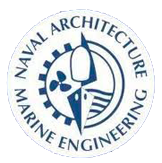Platform Design
Aims
For all engineering projects engineering design is a fundamental aspect to be carried out. Within the scope of this project the Pneumatically Stabilized type of Platform (PSP) was selected. The design aims are:
Methodology
The fundamental challenge of a wave energy collection platform is the trade-off between energy extraction and cost. To maximise the energy extraction, the transverse dimension, or platform width, must be maximised; however, this significantly increases the capital cost of the platform.
1. Cost Minimisation
For the platform to be successful, the costs need to be reduced wherever possible. Both material choice and platform design (layout & dimension) have a substantial effect on the overall cost. With regards to material choice, there are two materials widely used for offshore structures: concrete and steel [1]. In our case concrete was chosen – click here for additional information for this decision [link to why PSP]
Pre–stressed concrete is used in in numerous offshore industry in projects like platforms, terminals and barges due to its low maintenance cost and ease of construction. The largest pre-stressed concrete barge in the world is the Nkossa Barge (France). The total volume of this barge is 25,000 m3.
Figure 1. Nkossa Barge (France)
The next stage of cost reduction was achieved by minimising the breadth dimension, while ensuring sufficient buoyancy and stability were maintained. A breadth of 50 m was found to be the lowest practical length that could be achieved due to the layout of the topside facilities such as the substation, accommodation etc.
2. Wave Energy Extraction Maximisation
Figure 2. Platform Layout
The design approach continued with the length identification which sought to balance total cost, constructability, space and wave energy extraction. In the wave climate experienced at the target site [link to site selection] a platform with 720 m transverse length open to the incoming waves is equivalent to 28.8 MW wave power rated [1].
After setting the length dimension, the next stage was to configure the layout of the platform. To increase stability without incurring additional cost, a shallow delta shape with a sweep angle of 191 degrees was used.
Figure 3. Topside Facilities Distribution
3. Variables Justification
The deck of the platform has a height of 0.3 m that is able to carry the weight of the additional uses weight (accommodation, research centre and the substation) and a 0.3 m bottom wrapper as well, which constrains the open bottom cylinders. The bottom wrapper is important to keep the cylinders vertically aligned in heavy seas, to minimise stress.
Concerning the total height of the platform with reference to the “LNG Terminal” [2] the total height defined as 38 m. In terms of cylinders there is an array of 5 open bottom cylinders in breadth and 72 in length. The total height of the cylinders is 37.7 m. The cylinders have a thickness of 0.24 m and inner diameter 7.9 m. The design parameters were verified by Float Incorporated as feasible.
Model
Figure 4 demonstrates the 3D model built in AutoCad, which has been used for the Hydrodynamics and the Hydrostatics analysis.
Figure 4. Platform Model Design
Go to Hydrostatics
References
[1] R. P. Fernandez and M. L. Pardo, "Offshore concrete structures," Ocean Engineering, no. 58, pp. 3014-316, 2013.
[2] N. A. Brown, "DESIGN APPROACH FOR A BROAD-BAND," 2013.
[3] "http://floatinc.com/LNGterminal.aspx," Float Inc. [Online].

